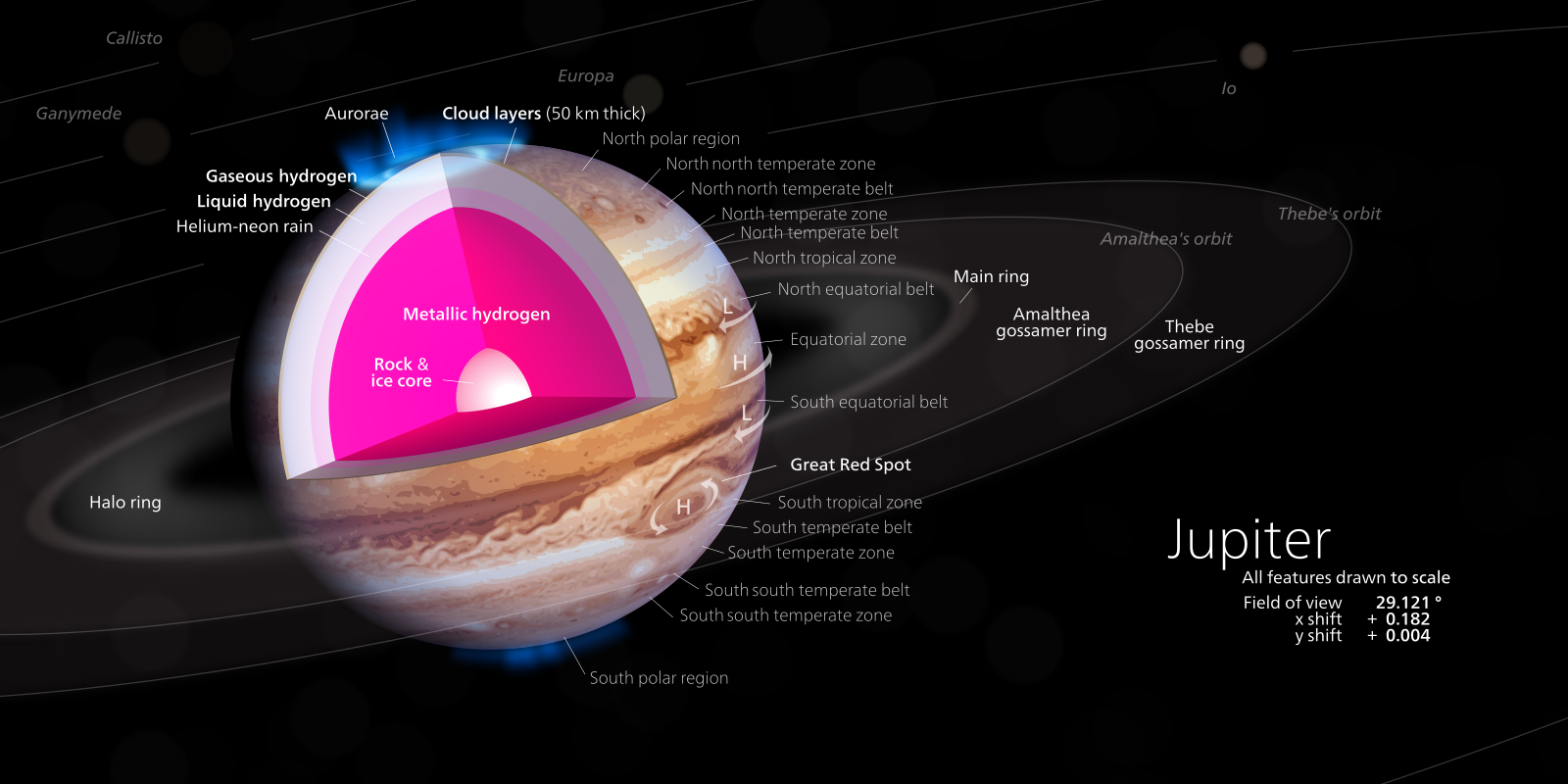Science News
& Faculty Articles
On the Mystery of Jupiter’s Cyclones Geometrical Patterns and Stability

Cyclones in North pole of Jupiter, by Juno Spacecraft. Image from original paper [1].
By Dr. Inés Urdaneta, Physicist at Resonance Science Foundation
Jupiter, the fifth planet from the Sun and the largest in our Solar System, is a gas giant primarily composed of hydrogen, though helium constitutes one-quarter of its mass and one-tenth of its volume. It is thought to have a rocky core of heavier elements, though it lacks a well-defined solid surface, like the other giant planets in the Solar System. Its outer atmosphere is defined by a series of latitudinal bands, with turbulence and storms along their interacting boundaries. Jupiter is mostly known for its Great Red Spot, a giant storm which has been observed since at least 1831.
 Diagram of Jupiter, its interior, surface features, rings, and inner moons. If Jupiter has an actual core or if there's actually metallic hydrogen inside, is currently purely theoretical. Credit image: Kelvinsong
Diagram of Jupiter, its interior, surface features, rings, and inner moons. If Jupiter has an actual core or if there's actually metallic hydrogen inside, is currently purely theoretical. Credit image: Kelvinsong
Juno spacecraft is the latest probe...



